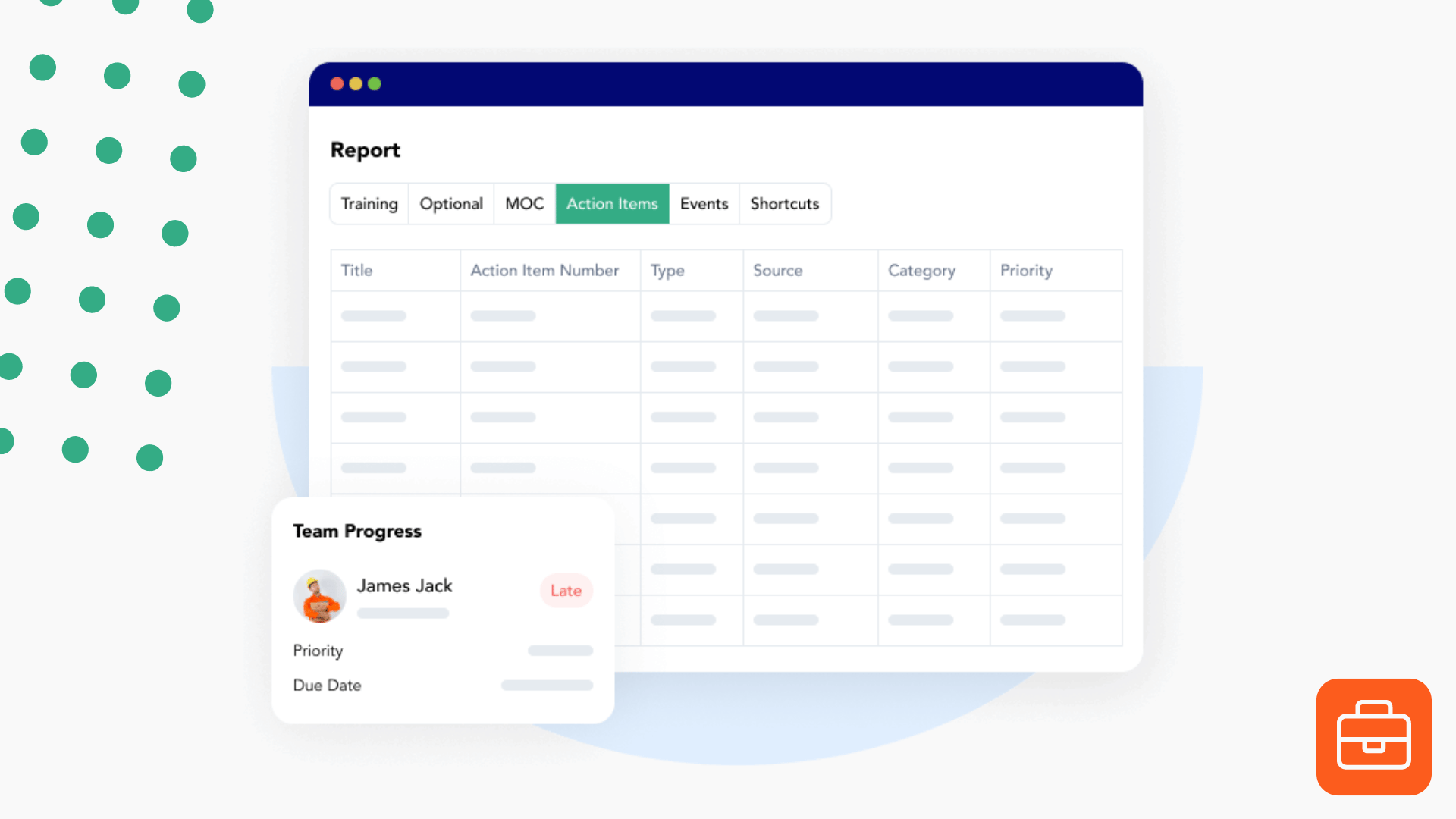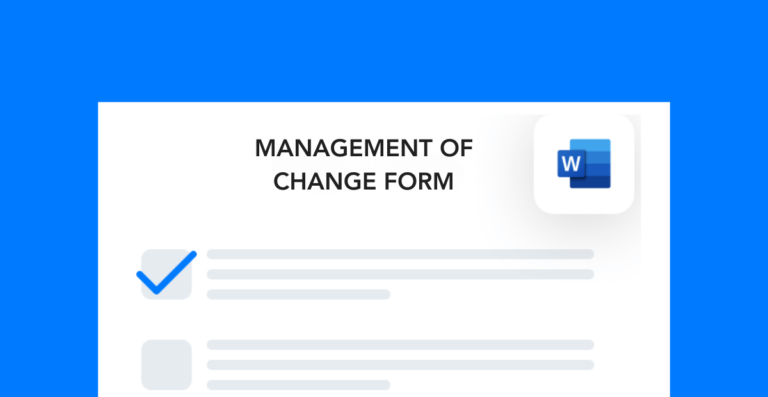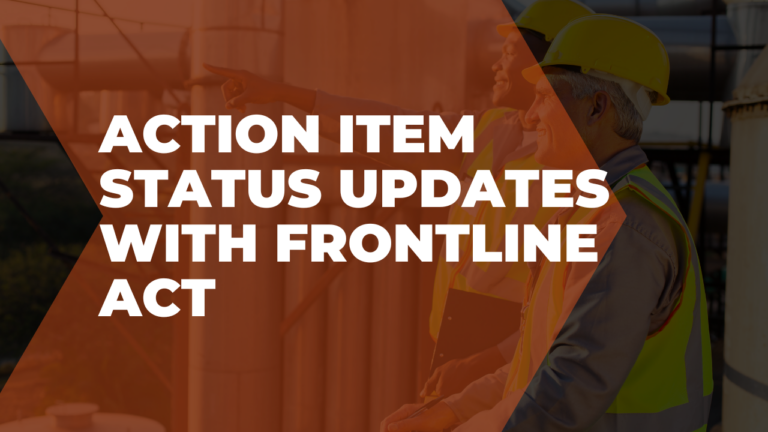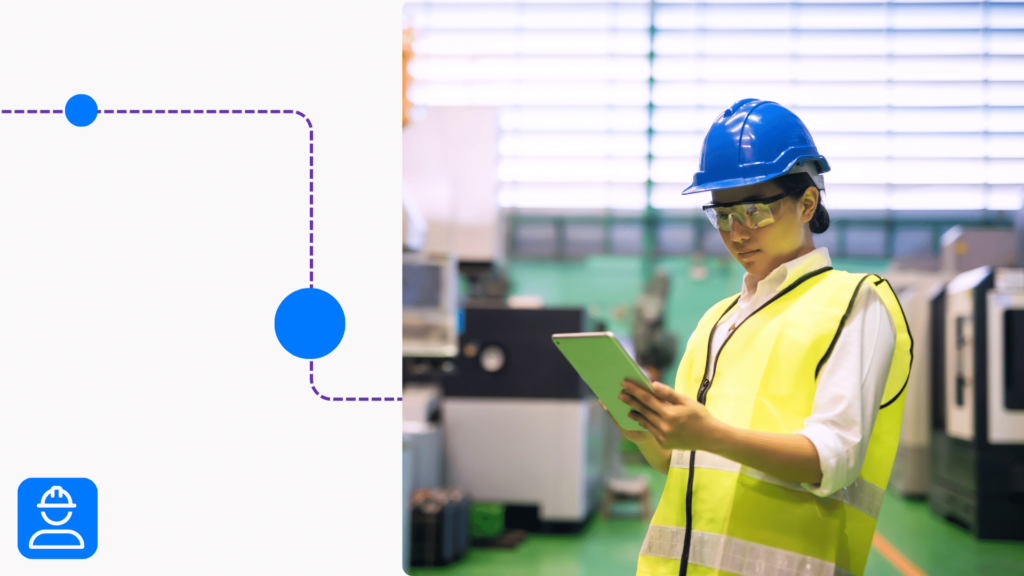You can’t run an efficient operation if you don’t have control of what’s happening. To gain control, you need full visibility over your people and processes. Frontline EHS software gives you better control over these variables so you can lower operational costs across the board.
Internal process improvements
Look to your internal processes for ways to reduce operational costs. Factors like knowledge churn, changes to regulatory requirements, and new technologies ensure that there’s always something you can do better. Below are just three ways that investing in Frontline EHS software can help you cut expenses via internal process improvements.
Cut down on administrative work
Most of the EHS professionals we speak to say that they want to reduce the amount of time spent on administrative tasks. This seems to be the case regardless of industry. And that’s because compliance requires a lot of documentation whether you’re in manufacturing, oil and gas, or anything in between.
Our EHS software tools cut down on administrative work by:
- Organizing your documentation so it’s easy to sort and filter
- Providing user-friendly workflows that reduce variability and prevent mistakes
- Keeping all your records in one accessible location
- Backing up your data so you never lose important information
- Allowing you to see progress without tracking down individual contributors
Reducing the time required for administrative work allows your EHS department to focus on more impactful tasks and projects. Not only will this affect your safety performance, but it’ll also help you lower operational costs in other areas like productivity and quality.
Improve your training program
Bad training can affect employee knowledge retention which means more retraining and a higher chance of incidents. It may also impact turnover—the less engaging your initial training is, the less motivated employees will be to stick around.
Tackling your training program is a good way to lower operational costs related to hiring, onboarding, and compliance. Our learning management system, Frontline LMS, makes it easier to manage your program so it’s always up to date.
Within the system, you can:
- Upload training materials and update them over time
- Set up skillsets to outline training requirements for each job
- Schedule classes and document attendance
- Keep detailed employee training records
- Create and maintain accurate user profiles
- Schedule training reminders and notifications
- Compile user-friendly reports of all scheduled, past due, and completed training
When you centralize your data, you won’t spend as much time tracking and documenting training. That’s time you can use to improve your content and develop your training staff so they’re more effective.
Minimize the impact of changes
Sometimes, changing variables like processes or equipment can negatively impact performance. It may cause production slowdowns or stoppages, quality issues, safety hazards, and more. Our clients use Frontline MOC to avoid these and other issues.
The major benefit of change management software is that it reduces the likelihood of mistakes and unintended consequences. In the Frontline MOC tool, changes go through a structured workflow from request and approval all the way to full implementation.
A common way our clients use this tool is to change processes that involve highly hazardous chemicals (under OSHA’s PSM regulation). Before any work begins on a change, it must go through an approval process. This gives the team time to evaluate how the change might affect health and safety. Only changes that receive approval move onto the next phases of the change management process.
With Frontline MOC, you can require specific documentation at each step in the process. This gives your team even more chances to review changes before they go into effect and leaves a well-documented record of all the decisions they make.
Operational performance costs
Another major area where you can reduce costs is to improve the efficiency of your operation. Documenting performance in the Frontline EHS platform gives you the data you need to create more effective processes and systems. Here are some ways you can use that data to tackle inefficiency.
Eliminate operational bottlenecks
Lower operational costs by eliminating bottlenecks within your processes. Before you can do this, you need to understand where the location and source of the bottlenecks. That’s where Frontline comes in.
Frontline ACT is great for documenting production delays or shutdowns. Since our forms are customizable, you can decide which fields you want to make reportable. You can use this to your advantage by having employees report data like total duration of a slowdown or average time to complete a specific process step.
The more you document with Frontline EHS, the easier it is to identify problems within your operation. If you record all production slowdowns, for example, you can track patterns over time. Having this data then allows you to identify and fix the equipment, personnel, procedures, etc., that cause the issue.
Ensure proper equipment maintenance
If you don’t take care of the equipment you have, then you’re throwing money away. This goes beyond the cost of repairs and replacements. It also includes:
- Operational downtime
- Rework of quality errors
- Turnover due to poor employee experience
- Increased safety risks
In the same way that employees need refresher training to stay compliant, equipment needs preventive maintenance to stay functional. Investing in Frontline EHS software is a great way to tackle both problems at once.
Within our action tracking system, you can coordinate equipment inspections, maintenance, installations, upgrades, etc. As your team completes assigned tasks, Frontline ACT keeps a detailed log that you can refer to in the future.
This means that you can find answers to questions like “when did this machine start malfunctioning” or “when was the last time we did maintenance on this component?” With this data you can better predict when you’ll have to repair or replace common workplace equipment. In the long run, you’ll spend less money on otherwise preventable issues.
Reduce incident rates
Injuries, property damage, loss prevention incidents, recalls, production shutdowns—all workplace incidents come with a cost. For injuries, these costs come in the form of things like workers’ compensation claims and lost time. In the case of recalls, costs come from customer returns and product waste.
Here are some ways you can use Frontline ACT to lower operational costs from these types of incidents:
- Document near misses so you can fix issues before they cause a bigger problem.
- Find incident trends and patterns that help you tackle the true root causes.
- Encourage proactive injury reporting and documentation.
- Track the cost of incidents so you can tackle the most expensive issues.
- Follow up on corrective actions after you implement them.
- Hold tasks owners accountable to completing their work.
If you want to prevent incidents, you have to understand why they happen. One of the main benefits of action tracking software is that it gives you much better visibility. The more incidents you document, the better you can predict and ultimately prevent future incidents.
Learn more about Frontline EHS
Our EHS software suite is made up of four tools that you can mix and match depending on your business needs:
- Frontline ACT: Track action items for workplace incidents, projects, and other tasks.
- Frontline MOC: Manage changes to variables like processes, equipment, and personnel.
- Frontline LMS: Coordinate training and onboarding and manage employee documents.
- Frontline CSM: Manage contractor documentation and training compliance.
You can learn more about these systems by heading to our product webinar library, watching some of our product videos, or booking a demo with one of our sales representatives.




